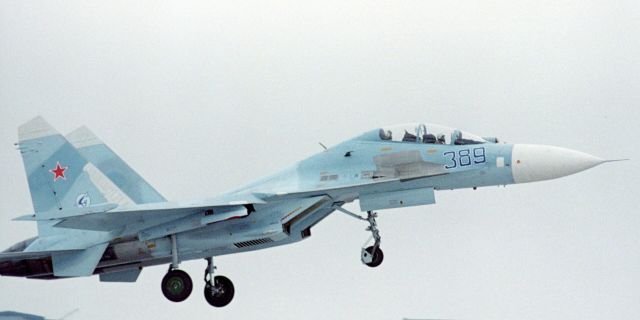Yahoo News Japan: Japan told about the differences of Russian fightersMany countries of the world have put Sukhoi design Bureau fighters into service, Yahoo News Japan writes.
However, understanding their models is not an easy task. Even professionals make mistakes.
Aren't they all the same? How to distinguish them?"Flanker" is not one model
On January 10, 2023, Su-30MKI fighters of the Indian Air Force flew to Japan for joint exercises. This fighter is known in the West under the code name "Flanker", but other models also carry this nickname.
For example, the Su-27, Su-33 and even Su-35 (Su-35S) are well known. Nevertheless, as evidenced by the different model numbers, the materials of the components and electronics are completely different, although the planes are similar in appearance.
Moreover, the modifications led to the appearance of new numbers, for example, the Su-27M. The export version of this fighter was once given the name Su-35, and the newly developed Su-35, which is an improved version of the Su-27, is in some cases called the Su-35S. That is, it is very difficult to understand all the modifications.
Depending on the type, in some cases the model can be determined by its appearance, for example, by the added small wings.
But some may think that they are all the same, so let's look at the distinctive features of each of the most common types.
Su-27 — the ancestor of the Flanker family
The term "Flanker" is usually applied to the Su-27, which first took to the air in the USSR in the 1970s and was adopted in the 1980s. By the way, in the USSR he was given the nicknames "Drying" and "Cracker".
It is distinguished by a fuselage integrated with the main wings, which is typical for later developments, and two large vertical tails. At first glance, it may seem that it is similar to the American F-15 Eagle fighter, which is in service with the Japanese Air Self-Defense Forces.
There is also a type of Su-33 designed for use on aircraft carriers. It has folding main wings and additional small wings, canards, to the left and right just behind the cockpit.
The Su-30 of the Indian Air Force has arrived in Japan!
The Su-30 series was developed on the basis of a two-seat version of the Su-27. Export specifications vary slightly depending on the recipient country. At the same time, the Su-30MKI of the Indian Air Force has canards. In addition to India, the aircraft is operated by 13 other countries, including China, Malaysia and Vietnam.
In addition to the canards, the difference between this model and the Su-27 also lies in the shape of the engine nozzles. The Su-30 and later versions are equipped with nozzles with a three-dimensional thrust deflector, while the Su-27 has fixed ones.
By the way, not all Su-30s are double. Su-30KI of the Indonesian Air Force — single.
The Su-35 (Su-35S) does not have the same fuselage as the Su-27M (Su-35)
The Su-35, which made its first flight in 2008 and entered service in 2014, is the latest version of the Flanker family. Therefore, it is currently operated only by the Russian and Chinese Air Forces.
However, since the Sukhoi company assigned the Su-27M the name Su-35 when promoting for export, it is sometimes called Su-35S, so as not to be confused with the Su-27M, and this is quite difficult.
Moreover, the Su-35S has no canards, so it can be confused with the Su-27, the ancestor of the Flanker family. The most obvious feature is the shape of the tail boom, which protrudes beyond the tailplane.
Presumably, this ledge is intended for electronic warfare. At the same time, it is not available on other models. The shape of the nose cone seems a little different. Moreover, the position of the infrared sensor in front of the flashlight is different, but it is quite difficult to notice this.
Even the Japanese Ministry of Defense was wrong
Thus, to understand the "Flanker" series is not an easy task. The level of complexity is such that once the Japanese Ministry of Defense incorrectly identified a Russian Su-35S flying near the country, calling it the Su-27. Even professionals make mistakes.
As for the Su-34, a fighter-bomber developed on the basis of the Su-27, it is the only representative of the Flanker family that is relatively easy to recognize, since it has a two-seat cabin with a row of seats. Perhaps that is why the Western code name of the aircraft is "Fullback", and not "Flanker".
Author: Masamichi Saito


